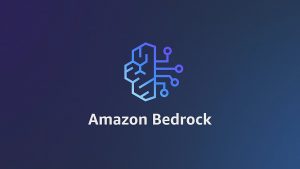Google is shaping AngularJS 2.0 as a future framework for mobile apps
![]() The next version of AngularJS is currently in a design and prototype phase. Nevertheless, Google has announced where the journey is going. As per Google, AngularJS 2.0 is a framework for mobile apps. The framework will continue to be supported for desktops, but the primary focus will be on getting the mobile bit right.
The next version of AngularJS is currently in a design and prototype phase. Nevertheless, Google has announced where the journey is going. As per Google, AngularJS 2.0 is a framework for mobile apps. The framework will continue to be supported for desktops, but the primary focus will be on getting the mobile bit right.
Right now, the developers of AngularJS seek to define the roadmap for the future of popular JavaScript frameworks. In a new blog entry, developer Brad Green gave a glimpse into what is planned for the 2.0 version of AngularJS. On the roadmap, the priority work is to the use of ECMAScript 6, a modular design and parting with older browsers.
ECMAScript 6 support and other changes
AngularJS is the most popular JavaScript framework created by Google. AngularJS framework is designed to facilitate the implementation of many Web applications even for non-experts JavaScript language. It is written according to Model View ViewModel (MVVM) pattern and its greatest strength lies in its ease of use, making it possible to use most of the functions with HTML language.
AngularJS 2.0 is a complete overhaul of AngularJS. Every feature of the framework has been taken apart, analyzed, compared to the state of the art of existing frameworks–finally re-designed and then recoded.
The first thing to understand about AngularJS 2.0 is that it will be developed with ECMAScript 6 (code name Harmony), the next version of the standard JavaScript. To run the ES6 code in browsers, AngularJS 2.0 will rely on the Traceur compiler also developed by Google. The framework is targeted at “evergreen” or automatically updated desktop and mobile browsers, including the Chrome, Firefox, IE11, Opera and Safari desktop browsers. In terms of mobile, AngularJS 2.0 will support Chrome on Android, Firefox mobile, iOS 6 and above and Windows Phone 8.
AngularJS 2.0 will provide high-resolution details of where time gets spent in applications, directly supported through a new Angular-wide logging service called diary.js. Google is also simplifying the directive API, integrating with other component frameworks using web standards and allowing IDEs to analyze and validate templates. Another improvement is the new persistence layer that provides a clean structure for working with servers and local persistent data in the browser, such as “always offline” modes and RESTful service use cases.
Performance boost
The speed of Apps will be increased through improved change-detection mechanisms. The design team of AngularJS 2.0 claims to have found other ways to perform the change detection faster with less memory intensive.
Version 2.0 of the framework should also be modular. Naturally, this is of particular benefit to the targeted mobile apps. Thus, only the components of the framework must be loaded that are actually needed. In addition, Google promises further performance improvements. For this, the team has already set out how AngularJS 2.0 will deal with touch animation.
Ready for the future
The main focus of AngularJS 2.0 is on mobile apps, because this is where the world is moving. Mobile developers have learned two main things about consumers: style and performance are what users want. For the former, the designer is responsible; in the latter case the AngularJS team’s library is in walking distance.
One of the strengths of the AngularJS 2.0 design is the Change Detection mechanism, which does its work in the background. This new process is designed to deliver a significant performance boost thanks to some new browser capabilites.
“There are many other areas of performance optimization we’ll include in AngularJS. From increasing first-load time with pre-parsed templates to ensuring silky smooth 60 frames per second animations, we’ll invest heavily on a fully optimized user experience,” Green said in the blog post.
Green also revealed that the AngularJS team is building AngularDart, a new version of the framework for Google’s Dart language.
“We’ll be upgrading AngularDart as we build AngularJS 2, so folks who prefer the Dart language can enjoy the same benefits as folks on [JavaScript],” he wrote. “Our goal is that there will be a single framework with your choice of language.”
Developers who wants to follow the development can go to the GitHub AngularJS project page or do the weekly notes of the team on Google Docs. Developers can also provide feedback through any of Angular’s channels.
The other JavaScript tool
Google has another JavaScript tool called Testacular. The new testing tool used to test all major web browsers. The tool runs JavaScript code on devices, can be integrated with CI tools, and works with any code editor. Testacular supports Chrome, ChromeCanary, Safari, Firefox, IE, Opera, PhantomJS, and can be run on various desktop or mobile device browsers. In addition, it works with various testing frameworks, having adapters for Jasmine, Mocha and AngularJS, and can also be integrated with Jenkins or Travis for running continuous integration tests.
Iconic project is another open source framework based on Angular.JS. The free open source HTML5 Mobile Framework can be used for building amazing, cross-platform native apps with HTML, JavaScript, and CSS. The framework is based on SASS (Syntactically Awesome Style Sheets) CSS extension and optimized for AngularJS.
A message from John Furrier, co-founder of SiliconANGLE:
Your vote of support is important to us and it helps us keep the content FREE.
One click below supports our mission to provide free, deep, and relevant content.
Join our community on YouTube
Join the community that includes more than 15,000 #CubeAlumni experts, including Amazon.com CEO Andy Jassy, Dell Technologies founder and CEO Michael Dell, Intel CEO Pat Gelsinger, and many more luminaries and experts.
THANK YOU













